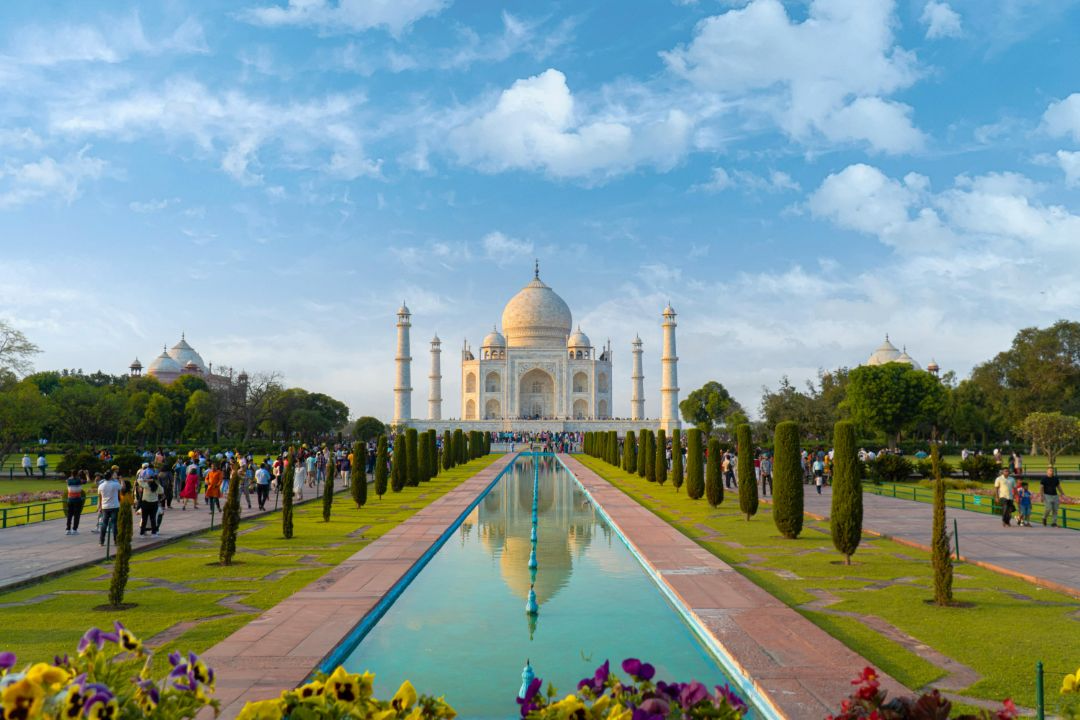Best Time to Visit the Taj Mahal: Complete Travel Guide 2025
September 27, 2025

The Best Time to Visit the Taj Mahal: A Full Travel Guide for 2025
The Taj Mahal is more than just a monument; it's poetry carved into white marble. This world wonder sits beautifully on the banks of the Yamuna River in Agra. It has been capturing hearts for hundreds of years and will continue to do so in 2025. The Taj is always beautiful, but the time of year you go will have a big effect on your experience. The correct season, time of day, and even day of the week may turn a crowded, humid walk into a magical moment that will last a lifetime. Let's look at a complete guide that will help you plan the best trip to the Taj Mahal in 2025.
Why the Taj Mahal's Timing Matters
Imagine the Taj Mahal as a painting that comes to life. Its hue, mood, and even its aura alter during the day and across seasons. At daybreak, it glows delicate pink; at midday, it shines blindingly white; at nightfall, it wears tints of gold and orange. If you visit at the wrong time, like in the middle of summer when it's really hot, you'll have to deal with crowds, heat, and tiredness. So, timing isn’t just about convenience; it’s about appreciating the monument the way it was supposed to be enjoyed.
Agra’s Weather in 2025: What to Expec
Agra has three different seasons—summer, monsoon, and winter.
Summer (April to June): It is very hot, with temperatures going beyond 40°C (104°F). If you can endure the heat, you’ll find fewer tourists and shorter queues.
Monsoon (July to September): The city becomes lush and verdant, although humidity is strong, and rain showers can interrupt tourism.
Winter (October to March): The most pleasant season with cold weather, clear skies, and a festive spirit. But it’s also the most congested.
For 2025 travelers, winter remains the favourite choice.
Best Time of the Year to Visit the Taj Mahal
If you’re asking, “What’s the single best month to visit?”—the answer is February. Here’s why: the weather is beautiful, sky are clear, and you also get to watch the vivid Taj Mahotsav, a cultural event that celebrates India’s past.
October to March (Ideal): Perfect weather, cultural events, and superb shooting circumstances.
April to June (Avoid if possible): Hot and dry. However, fewer tourists imply quieter periods at the Taj.
July to September (Mixed bag): Green surroundings and lovely rain-kissed views, yet muggy circumstances can be taxing
Best Time of the Day to Visit
Sunrise: This is hands down the best time. The gentle morning light paints the Taj in pastel tints, and the crowds are limited.
Sunset: Ideal for photographers looking for golden-hour splendour. The monument sparkles wonderfully against the orange sky.
Night Viewing: Yes, you may see the Taj at night—but only on five days a month: the full moon night and two days before and after it. In 2025, this is projected to be better regulated, making it an uncommon but remarkable encounter.
Taj Mahal 2025 Travel Updates
Traveling in 2025 entails adapting to a few changes:
Digital Tickets: Online booking is becoming the standard. Paper tickets are being phased away.
Eco-Friendly Moves: Battery-operated buses and e-rickshaws are the major transport around the Taj to decrease pollution.
Security Checks: Expect stringent checks, so avoid carrying huge bags, food, or unneeded electronics.
How to Beat the Crowds
The Taj Mahal sees millions of visitors annually. Here’s how to enjoy it without the chaos:
Visit during weekdays—Tuesdays to Thursdays are excellent.
Book tickets online in advance to skip huge lineups.
Use the East Gate or West Gate instead of the South Gate, which is often crowded.
Arrive early, ideally 30 minutes before sunrise.
